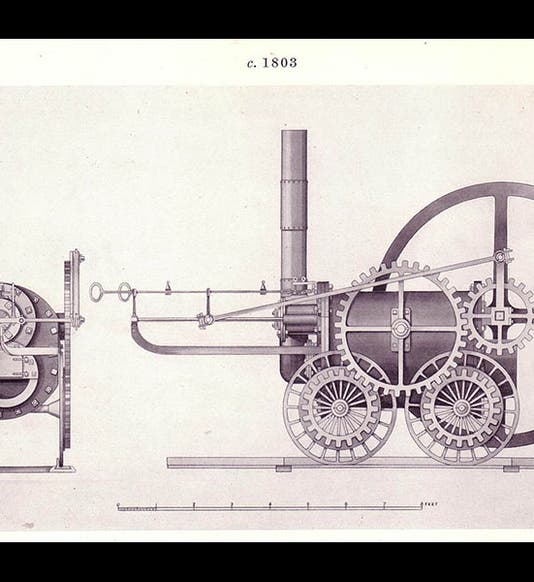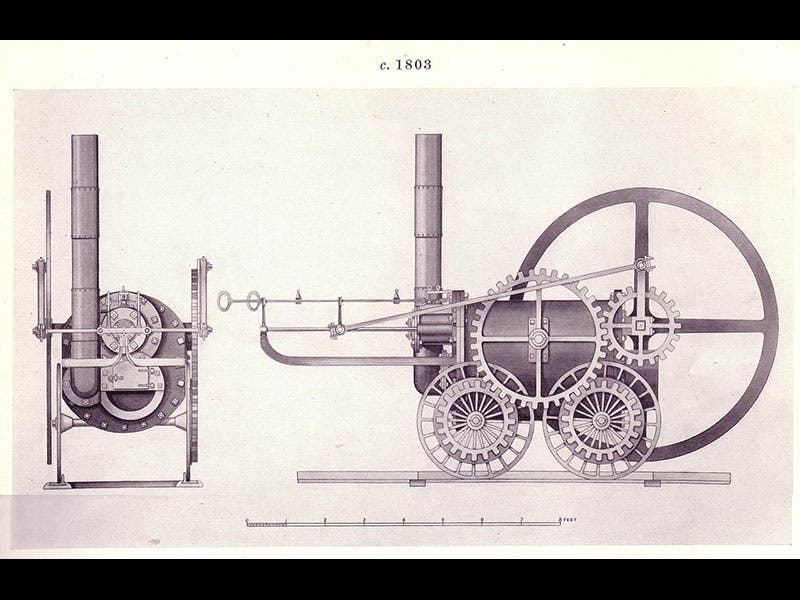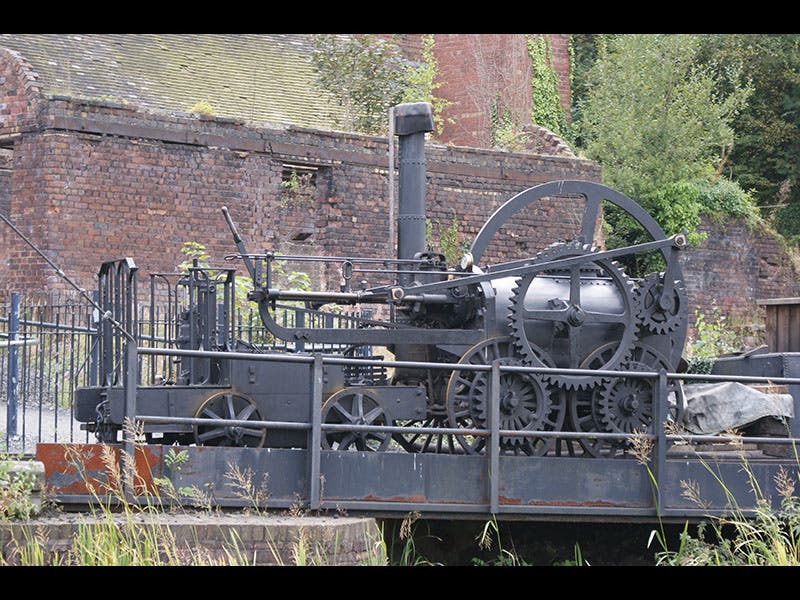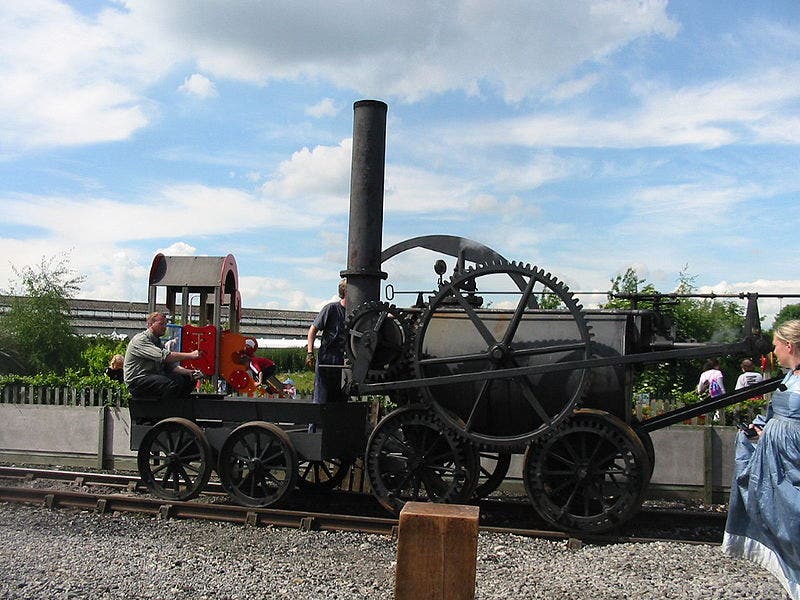Scientist of the Day - Richard Trevithick
Richard Trevithick, a Cornish engineer and inventor, was born Apr. 13, 1771. In the late 18th century, the only steam engines available in England were the Newcomen engine and the Watt-Boulton engine. Both were atmospheric engines, which means they used low-pressure steam to push a piston in one direction and atmosphere pressure to return the piston to its starting position. Such engines were great for pumping water out of mines, but they were too heavy and too slow for use on a locomotive. Trevithick invented a high-pressure, two-stroke steam engine small enough to put on wheels, and he used it to build a steam locomotive. Actually, he built several of them. The first, called Puffing Devil, was constructed in his home town of Camborne in Cornwall; it was a road locomotive, rather than a railway engine, which he used to carry some passengers up Camborne hill in 1801. Then he built another, usually called the Coalbrookdale engine, for an ironworks in Shropshire; this was the first railway engine. Finally, in 1804, he used a third locomotive (called the Penydarren) to pull a load of 10 tons on a railway line of 10 miles in Swansea, in order to win a bet, which he accomplished on Feb. 21, 1804.
Oddly, the only tangible remains of these three famous locomotives is a single drawing of the Coalbrookdale locomotive, in the archives of the British Museum. We see above a later engraving based on that drawing (first image). It had a large flywheel (which you would need if you are trying to produce rotary motion with just one piston); note also that the power wheels were driven by two spur gears. This has been all the detail necessary to prompt the building of a number of modern replicas of Trevithick locomotives; there is a replica of the Coalbrookdale locomotive at the Blists Hill Museum in Ironbridge (second image), and one of the Penydarren at the National Waterfront Museum in Swansea (third image). If they look similar, remember that both are based on the same drawing. If you would like to see one of the replicas in action, here is the Blists Hill Museum replica with its steam up.
There is a portrait of Trevithick, by John Linnell, somewhere in the National Museum of Science and Industry complex in Britain (fourth image). And should you ever be in Camborne, down near the tip of Cornwall, and strolling past the Camborne Public Library, you will see a handsome statue of Trevithick standing before you. He holds a replica of one of his locomotives (fifth image).
Dr. William B. Ashworth, Jr., Consultant for the History of Science, Linda Hall Library and Associate Professor, Department of History, University of Missouri-Kansas City. Comments or corrections are welcome; please direct to ashworthw@umkc.edu.











